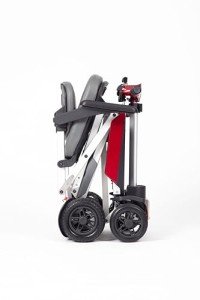The Complete List Of Mobility Devices Dos And Don'ts
Understanding Mobility Devices: Enhancing Independence and Quality of Life
In today's fast-paced world, the desire for mobility is universal. Nevertheless, certain medical conditions or age-related challenges can hinder movement, resulting in an ongoing search for assistance. Mobility devices serve as necessary tools to enhance self-reliance, enhance quality of life, and make it possible for individuals to engage fully in their communities. This article provides an extensive introduction of mobility devices, including their types, features, selection criteria, and more.
Kinds Of Mobility Devices
Mobility devices range from easy aids to complicated equipment, tailored to satisfy different needs. Below is a table summarizing common kinds of mobility devices:
Type of Device
Description
Ideal For
Walkers
Four-legged assistance devices that offer exceptional stability while strolling.
Individuals needing additional assistance.
Walking sticks
Single or three-legged sticks that improve balance and assistance walking.
Those with minor mobility troubles.
Wheelchairs
Seats installed on wheels, readily available in manual and electric variations.
Individuals with minimal or no mobility.
Scooters
Electric cars created for outside usage and ease of navigation.
Those who can't stroll fars away.
Crutches
Devices that assist people transfer weight away from a hurt leg.
Individuals recovering from leg injuries.
Rollators
Walkers with wheels, seats, and brakes for improved mobility.
Users needing rest choices while walking.
Raise Chairs
Reclining chairs that assist users in standing up and sitting down.
Seniors or those with mobility constraints.
Mobility Scooters
Small electric vehicles for restricted mobility, typically used outdoors.
Individuals requiring support over cross countries.
Key Features of Mobility Devices
When selecting a mobility gadget, numerous key functions need to be considered to make sure optimum functionality and ease of use:
- Weight Capacity: Understanding the device's weight limitation is important for security and efficiency.
- Adjustability: Devices must be adjustable in height and width to fit the user comfortably.
- Portability: Lightweight and foldable choices are essential for users who travel or need transportation.
- Stability and Safety: Look for functions like anti-tip wheels and strong structures to improve security.
- Ease of Use: Simple mechanisms and user-friendly styles can make a considerable difference in day-to-day usage.
- Comfort: Ergonomic designs and cushioned seats can boost the user experience.
Choosing the Right Mobility Device
Picking the ideal mobility gadget can be a challenging task. Here are some actions to guide the decision-making procedure:
- Assess Needs: Evaluate the person's mobility challenges and day-to-day activities.
- Consult a Professional: Engage healthcare experts who can supply suggestions based upon the individual's physical condition.
- Trial Options: If possible, trial various devices to identify comfort and performance.
- Evaluation Budget: Consider the cost of the gadget, including any extra functions or modifications needed.
- Research study Options: Determine the very best brands and models by reading reviews and comparisons.
Table: Comparative Analysis of Popular Mobility Devices
Device
Benefits
Disadvantages
Walkers
Outstanding stability, promotes walking.
Large, may restrict motion in small areas.
Walking canes
Lightweight, boosts balance.
May not supply adequate support for serious mobility issues.
Wheelchairs
Suitable for those with considerable mobility restrictions.
Can be troublesome, particularly in indoor environments.
Scooters
Great for outside use, simple to maneuver.
Restricted indoor use, much heavier.
Rollators
Provides rest alternative, easy to move.
May need more space than standard walkers.
Raise Chairs
Comfortable, assists transition from sitting to standing.
More costly, larger footprint.
Regularly Asked Questions (FAQs)
1. What is a mobility gadget?
A mobility device is any tool created to assist people in moving and browsing their environment. This consists of walkers, wheelchairs, scooters, and crutches.
2. How do I understand which mobility device is best for me?
Consider your particular mobility challenges, physical capabilities, and lifestyle needs. Consulting with healthcare experts can likewise provide tailored suggestions.
3. Are mobility devices covered by insurance?
Many insurance strategies, consisting of Medicare, may cover certain mobility devices. It's important to contact your insurance provider for particular coverage information.
4. Can I rent a mobility gadget rather of purchasing one?
Yes, numerous medical supply stores and pharmacies offer rentals for mobility devices. This alternative is advantageous for people with short-lived mobility concerns.
5. How can I keep my mobility gadget?
Routine maintenance is vital. It includes cleaning the device, checking for wear and tear, and guaranteeing all parts are functioning properly.
The Impact of Mobility Devices on Quality of Life
Mobility devices considerably enhance the quality of life for individuals with minimal mobility. They cultivate self-reliance, motivate social interaction, and improve access to necessary services and recreational activities.
- Increased Independence: Users can navigate their areas, attend events, and take part in pastimes without depending on others.
- Social Engagement: Mobility devices facilitate participation in celebrations, therefore combating feelings of isolation.
- Enhanced Safety: Devices supply stability and decrease the risk of falls, promoting user confidence.
Mobility devices are more than just tools for movement; they are entrances to self-reliance and quality living. By understanding the different kinds of mobility aids available, their key functions, and considerations for choosing the best gadget, individuals can make informed decisions about their mobility needs. Eventually, the best mobility gadget can result in a more active, satisfying life. Whether talking to 's a walker, wheelchair, or scooter, the ideal choice contributes considerably to enhancing the mobility and independence of users.
